Dutch lender ING has become the latest bank to embrace the trading room robot revolution with the introduction of technology that will help human traders to swiftly gather better bond prices. The bank, which has won plaudits for its early adoption of fintech in retail banking, introduced its new artificial intelligence bond trading tool “Katana” on Tuesday morning. Katana will use data from hundreds of thousands of trades to help the bank’s traders to get better bond prices faster. In a six-month trial at ING’s emerging markets desk, the AI tool led to faster pricing decisions for 90 per cent of trades, and cut trading costs by 25 per cent. Katana is now being launched across ING’s fixed income business; its users will sharply increase from a “handful” of emerging markets traders to about 100 fixed income traders across the lender. Other banks including JPMorgan and UBS have already introduced AI on their trading floors. Santiago Braje, global head of credit trading at ING Wholesale Bank, said ING’s approach was unique because the AI empowers traders instead of replacing them. “What we use Katana for is to improve the quality of the decisions . . . our traders make, it’s a performance improvement tool,” he said, describing Katana’s suggested price as something a trader “may or may not” follow. Earlier this year, JPMorgan began using AI to execute trades in some equities businesses; UBS is using AI to handle post trade allocation and develop strategies for trading volatility. Experts, including consultants at Accenture, have issued bleak warnings about AI’s potential to put thousands of bank workers out of a job by performing their tasks faster and to a higher standard. Frank Derks, head of ING’s advanced analytics team, said ING’s approach was about enabling workers and improving performance. “Further ahead in the future, it [AI] will probably have an impact on our workforce [numbers] . . . It’s not a key focus for ING to go for that goal immediately.” ING has 250 experts, including data scientists, advanced analytics and machine learning experts, working on AI and related projects across the bank. In the case of Katana, the bank believes better and faster pricing will help it win more business. “These are highly competitive markets,” said Mr Braje. “Every price that we quote, we are competing with 10 people . . . We only win if we provide the best price.” He added that Katana is an evolving platform and may ultimately provide quotes directly to clients instead of advising ING’s traders. The bank also sees broader market potential for the platform created by a 10-strong team of ING developers. “We are in fact already working with a major . . . asset manager in the Netherlands to develop a tool to tackle a completely different investment problem based on the same principles and on the same platform,” Mr Braje said.Please use the sharing tools found via the email icon at the top of articles.
Dutch lender ING has become the latest bank to embrace the trading room robot revolution with the introduction of technology that will help human traders to swiftly gather better bond prices. The bank, which has won plaudits for its early adoption of fintech in retail banking, introduced its new artificial intelligence bond trading tool “Katana” on Tuesday morning. Katana will use data from hundreds of thousands of trades to help the bank’s traders to get better bond prices faster. In a six-month trial at ING’s emerging markets desk, the AI tool led to faster pricing decisions for 90 per cent of trades, and cut trading costs by 25 per cent. Katana is now being launched across ING’s fixed income business; its users will sharply increase from a “handful” of emerging markets traders to about 100 fixed income traders across the lender. Other banks including JPMorgan and UBS have already introduced AI on their trading floors. Santiago Braje, global head of credit trading at ING Wholesale Bank, said ING’s approach was unique because the AI empowers traders instead of replacing them. “What we use Katana for is to improve the quality of the decisions . . . our traders make, it’s a performance improvement tool,” he said, describing Katana’s suggested price as something a trader “may or may not” follow. Earlier this year, JPMorgan began using AI to execute trades in some equities businesses; UBS is using AI to handle post trade allocation and develop strategies for trading volatility. Experts, including consultants at Accenture, have issued bleak warnings about AI’s potential to put thousands of bank workers out of a job by performing their tasks faster and to a higher standard. Frank Derks, head of ING’s advanced analytics team, said ING’s approach was about enabling workers and improving performance. “Further ahead in the future, it [AI] will probably have an impact on our workforce [numbers] . . . It’s not a key focus for ING to go for that goal immediately.” Recommended FT Alphaville: Machine learning the market When Silicon Valley came to Wall Street Listen: Why AI is the future ING has 250 experts, including data scientists, advanced analytics and machine learning experts, working on AI and related projects across the bank. In the case of Katana, the bank believes better and faster pricing will help it win more business. “These are highly competitive markets,” said Mr Braje. “Every price that we quote, we are competing with 10 people . . . We only win if we provide the best price.” He added that Katana is an evolving platform and may ultimately provide quotes directly to clients instead of advising ING’s traders. The bank also sees broader market potential for the platform created by a 10-strong team of ING developers. “We are in fact already working with a major . . . asset manager in the Netherlands to develop a tool to tackle a completely different investment problem based on the same principles and on the same platform,” Mr Braje said.

